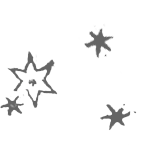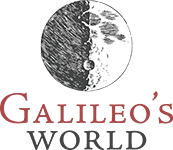Meteorology
Meteorology
Exhibit items on the subject of meteorology.
Exhibit Items
|
Treasury of Optics al-Haytham, Ibn (1572) The frontispiece depicts a variety of optical phenomena: Reflection. Refraction. Perspective. The rainbow. Burning mirrors. |
 |
|
| 1 |
The Atmosphere: Popular Meteorology Flammarion, Camille (1888) Meteorology is a quest of discovery, the challenge of boldly exploring where no one has gone before. That is the appeal and rhetorically durable theme which has made this woodcut so appealing. |
|
| 1 |
The Book on Air Hero of Alexandria, (1575) Once an altar is lighted, the temple doors open automatically. Hero fashioned all sorts of marvelous automata using steam, air pressure, hydraulics and falling weights. Devices included an automatic wine dispenser, siphons, garden fountains, engines, pumps, steam-powered toys, and magic tricks... |
|
| 1 |
Works of Hesiod Hesiod, (1559) In Works and Days, the poet Hesiod, a roughly contemporary of Homer, compiled guidelines for conducting life and forecasting the weather according to the stars. |
|
| 1 |
Letters on Sunspots Galileo, (1613) In a 1611 book published by the Academy of the Lynx, the Jesuit astronomer Christoph Scheiner argued that sunspots are little planets circling the Sun like Venus. Galileo answered Scheiner with this book. |
 |
| 2 |
Discourse on Floating Bodies Galileo, (1612) To provide entertainment at a dinner held by the Grand Duke of Tuscany, Galileo debated the Aristotelian physicist Lodovico delle Columbe on the topic of floating bodies. Galileo employed Archimedes’ mathematical analysis. |
 |
| 2 |
On Comets Hevelius, Johann (1668) The frontispiece shows three views of the paths of comets: the Aristotelian theory that they consist of vapors beneath the Moon (left); Kepler’s theory that comets move in straight lines (right); and Hevelius’ view that they originate in the outer regions and descend in a parabolic trajectory... |
 |
| 2 |
Meteorology, 1556 Aristotle, (1556) In a discussion of optical effects of the atmosphere, Aristotle here addresses the formation of a halo around the Moon. This is one of the most interesting uses of mathematics in all of Aristotle’s writings. |
|
| 2 |
Appearances of the Sky Aratus, (1547) Aratus, a Greek scientist and poet of the 3rd century B.C.E., offered practical advice for predicting the weather by learning to recognize the seasonal appearances of constellations. |
|
| 3 |
Considerations on Galileo's Discourse on Floating Bodies Pannochieschi, Arturo (1612) Pannochieschi, head of the University of Pisa, defended Columbe, widening the debate over floating bodies and exemplifying the Aristotelian physicists’ reaction to Galileo’s use of Archimedean methods. In response, Galileo published a 2d ed. |
|
| 3 |
Demonstration of the Halo Reinhold, Erasmus (c. 1550) This manuscript contains two transcriptions of a university lecture by Erasmus Reinhold. The diagrams are nearly identical to Aristotle’s discussion of halos in the Meteorology. Reinhold was a well-known Wittenberg astronomer, sympathetic to Copernicus. |
|
| 4 |
Response to the Opposition of Lodovico delle Colombe Galileo, (1615) Some of Galileo’s most avid opponents were Aristotelian physicists who, lacking training in mathematics, were unable to refute Galileo’s arguments. |
 |
| 4 |
Studies on Glaciers Agassiz, Louis (1840) In 1840, Agassiz introduced a radical element of contingency into geohistory, contrary to then widespread assumptions of uninterrupted gradual cooling. |
 |
| 5 |
Revolutions of the Sea Adhémar, Joseph Alphonse (1842) Accepting Agassiz’ theory of the Ice Age, Adhémar proposed that an astronomical cycle – the precession of the equinoxes – affects the melting of polar ice caps and thereby may lead to a catastrophic rise in sea level around the globe. |
|
| 5 |
Galileo Thermoscope replica, National Weather Center Galileo’s thermoscope, ancestor to the thermometer: Galileo pioneered scientific investigations with the thermoscope along with his two Paduan friends, Giovanni Sagredo and Santorio Santorio. |
|
| 5 |
On the Snowflake, or the Six-Angled Crystal Kepler, Johann (1611) Kepler’s contributions reached far beyond the realm of astronomy, to meteorology, mathematics, geology, mineralogy and crystallography. Kepler published this 24-page pamphlet, a study of the snowflake, as a New Year’s greeting for a friend. |
 |
| 6 |
The Book of Meteorology Paracelsus, (1566) Paracelsus in this book attacked Aristotelian philosophy, arguing that an experimental understanding of chemical processes would hold the key to advances in meteorology. |
|
| 6 |
Essays on Natural Experiences, 1666 Accademia del Cimento, (1666) The Academy of the Lynx (Accademia dei Lincei) dissolved after the death of its founder, Prince Federigo Cesi. In its place, Grand Duke Ferdinand II established the Academy of Experiment in Florence, which carried further the research program of Galileo. |
 |
| 6 |
Galileo Thermoscope replica, Bizzell Memorial Library Galileo’s thermoscope, ancestor to the thermometer: Galileo pioneered scientific investigations with the thermoscope along with his two Paduan friends, Giovanni Sagredo and Santorio Santorio. |
|
| 7 |
Essays on Natural Experiences, 1667 Accademia del Cimento, (1667) The Academy transformed the thermoscope into the thermometer by adding a graduated scale (which had been done by Galileo and his friends) and by sealing the tube to make it independent of air pressure. |
|
| 7 |
Forecasts Paracelsus, (1536) Woodcuts adorn the top of each page in this “astro-meteorology,” a fusion of meteorology, astronomy, chemistry and medicine containing forecasts for the next 24 years. |
|
| 8 |
Essays on Natural Experiences, 1701 Accademia del Cimento, (1701) The Academy crafted a hygrometer to measure humidity in the air. They improved the barometer, and conducted many experiments with air pressure. The Academy also experimented with light and phosphorescence, radiant heat, the velocity of sound and many other topics. |
|
| 8 |
On Meteorology Descartes, René (1637) This essay on meteorology contains Descartes’ explanation of the optics of the rainbow and his law of refraction. Descartes’ ambitious aim was to produce a new body of writings that would completely displace the Aristotelian corpus. |
 |
| 8 |
On the Transformations of the Atmosphere Porta, Giambattista della (1610) Della Porta dedicated several books to Cesi. Cesi underwrote publication of this book on meteorology, which includes wide-ranging discussions of water, earthquakes and meteorites. The title page displays Cesi’s coat of arms. |
|
| 9 |
Galileo Thermoscope replica, Bird Health Sciences Library Galileo’s thermoscope, developed in the context of pneumatic engineering, was an ancestor to the thermometer. Galileo pioneered scientific investigations with the thermoscope along with his two Paduan friends, Giovanni Sagredo and Santorio Santorio. |
|
| 10 |
Curious Technology Schott, Gaspar (1664) Schott was among the first to report the “Miracle of Magdeburg,” the sensational story of Otto von Guericke’s public demonstration of the reality of the vacuum. Von Guericke bolted two large hemispheres together, then evacuated the air inside them with his air pump. |
 |
| 10 |
A Prognostication Everlasting of Right Good Effect Digges, Leonard (1605) This sun-centered cosmic section representes the first published defense of Copernicus in England, printed in a work of meteorology. |
 |
| 11 |
Tornadoes: What they are and how to observe them Finley, John P. (1887) This is the first book written in English devoted to tornados. Finley served in the US Army Signal Service, which was tasked with weather forecasting in 1870. Finley’s study of tornados led him to issue unofficial tornado forecasts. |
 |
| 11 |
Subterranean World Kircher, Athanasius (1665) This is one of two richly-embellished global sections which depict Kircher’s vision of interlaced systems of air, fire, and water around and within the Earth. |
 |
| 11 |
New Experiments von Guericke, Otto (1672) In this work, von Guericke explained the design of his air pump and recounted additional experiments conducted with it. He employed the barometer to forecast the weather, and invented an electrostatic generator. |
|
| 11 |
The Star-Splitter Frost, Robert (1923) In a comical ballad called “The Star-Splitter,” Robert Frost described a man outdoors splitting firewood after the first frost of autumn: “You know Orion always comes up sideways. |
|
| 12 |
New Experiments Physico-Mechanicall, Touching the Spring of the Air Boyle, Robert (1660) Boyle, who heard of von Guericke’s experiments via Schott, retained Robert Hooke to construct a similar air pump for him. Boyle’s experiments supported his “corpuscular” view of matter, that air is comprised of particles in motion. |
|
| 12 |
On the Tornado Boscovich, Ruder (1749) Boscovic, a Jesuit mathematical physicist from the region of modern-day Croatia, published this account of a tornado that passed through Rome in June of 1749. Benjamin Franklin’s reading of this book prompted his own tornado investigations, including storm chasing. |
 |
| 13 |
Opticks Newton, Isaac (1704) Newton’s contemporaries may have first heard of him through articles in the Philosophical Transactions of the Royal Society of London. There he reported his experiments with prisms on the nature of light and color in the atmosphere. |
|
| 13 |
Tornadoes: What they are and how to observe them Finley, John P. (1887) This is the first book written in English devoted to tornados. Finley served in the US Army Signal Service, which was tasked with weather forecasting in 1870. Finley’s study of tornados led him to issue unofficial tornado forecasts. |
 |
| 14 |
Meteorological Essays Dalton, John (1793) Dalton defined the law of partial pressures in the course of his meteorological research. Three years later, his New System of Chemical Philosophy (Manchester, 1808) presented his atomic theory and provided a way to calculate the relative weights of elements and compounds. |
 |
| 14 |
On the Equations of the Relative Movement of Systems of Bodies Coriolis, Gaspard-Gustave de (1835) Coriolis explicitly analyzed rotating systems such as a waterwheel, but his conclusions apply to the atmosphere and the rotation of the Earth. Galileo’s principle of the relativity of motion depends upon an analogy between the Earth sailing through space and a ship at sea. |
|
| 15 |
The Origin of Continents and Oceans Wegener, Alfred (1924) This page reflects Wegener’s interest in temperature fluctuations and patterns of glaciation. The theory of continental drift developed from Wegener’s researches in Greenland as a meteorologist with an interest in polar climate. |





